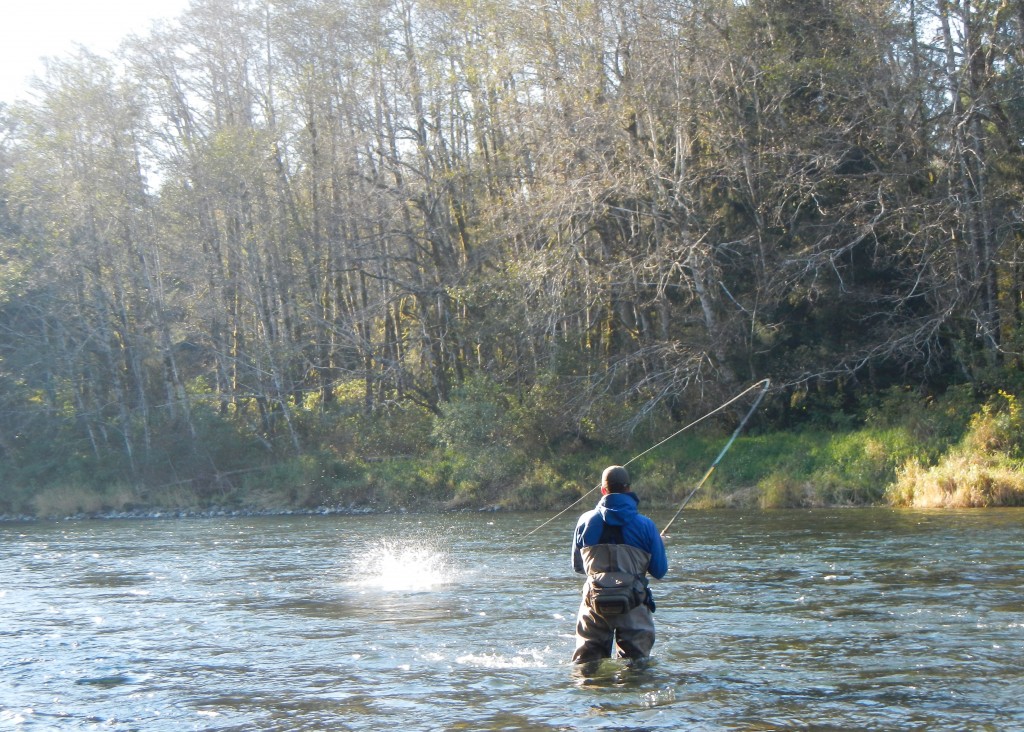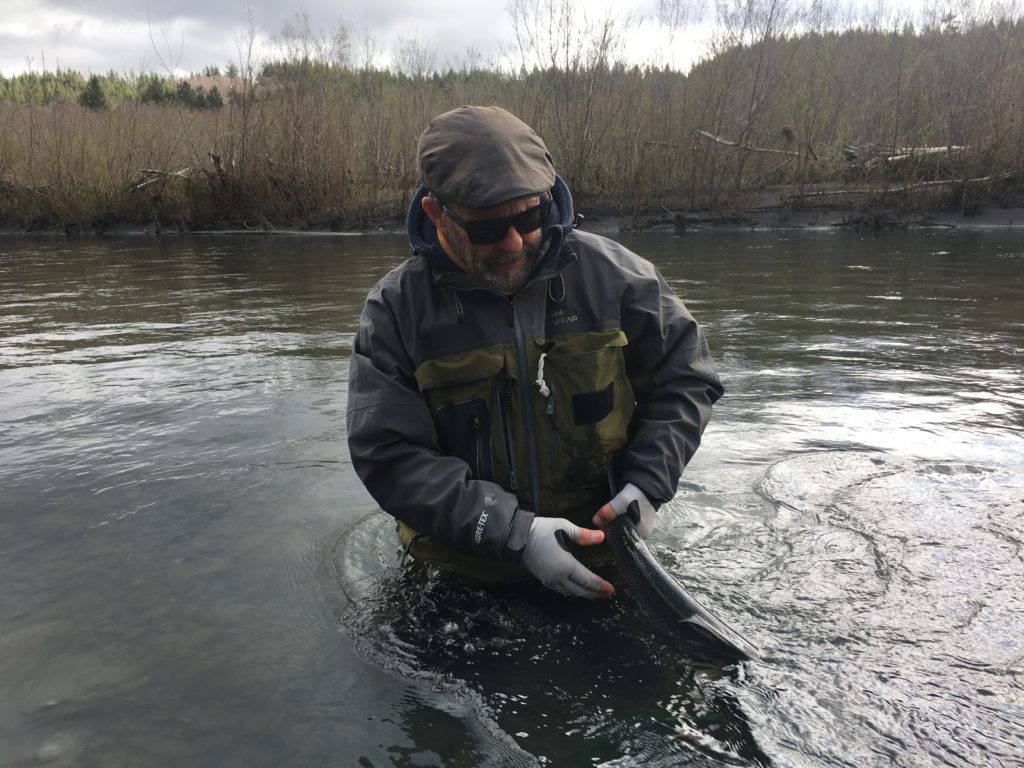OP spey fishing stuff
A few tips that may help you put your winter steelhead fishing time to better use. Or may not.
I get a lot of questions from spey anglers wanting to get out on their own and catch some fish swinging, here are some notes based on my experiences, your thoughts and comments are always appreciated.
Here are some notes.
Fishing the right water/scouting
Ultimately, time is your enemy. You will need to spend a lot of time with your fly fishing good water to be successful. Even if you plan your trip to be a few weeks long (and you should if you can) you will still need to spend that time focused on keeping your fly in good water as much as possible.
There are a handful of anglers around here who are consistently successful. That is most days they can hook a fish swinging in the morning, then go do something else.
The first thing that they do differently is where they fish. Really knowing some spots is important.
Spots are always changing a bit, so this is super difficult unless you fish all the time and also hang out with other folks who fish all the time and they are kind enough to share some info.
But there are some short cuts.
A run looking like good steelhead holding water, or good swinging water, is nice. But for it to be a real “spot” it should look like the best water for a mile in either direction. Follow the river until you find 4 great looking runs in a row, then go back and start with the best one.
If there is already some one standing there, thats another clue.
You should spend your scouting time just scouting, and your fishing time just fishing, don’t try to mix the two, or you will likely spend your day settling for less than premium water.
The OP is a tricky place, water levels will play a huge part in your day to day choice of water, and the levels commonly change a lot every day.
Fishing
Once you pick a place to fish, work through it from above the top to below the bottom the first time through.
That is start in the fast water above the run and fish into the fast water below it.
Your goal here is to map the run, looking and feeling for spots of interest.
It will look different as you move through it, spots that look awesome from a little distance may seem to fast or too shallow once your fly is in them.
You MUST change your sink tip, and probably the weight of your fly. Seriously, you really need to find the bottom from time to time or your just not fishing.
You may fish a polly leader at the head, 10 ft of T-15 in the bucket, and the polly leader again in the tailout. Thats good, take the time to do it.
Fish through the whole thing, mapping, and planning for the next pass through the same run.
The second time through the run you will do it differently.
I start at the top and pick the very first spot that I really think should hold a fish. Then I make a plan to get my fly to that spot, at the correct depth, speed and angle in one cast.
A “spot” to me is an area maybe 3 ft wide and 5 ft long that seems significantly more interesting than the water around it. I am going to fish directly to this spot, concentrating the best part of my presentation there.
Obviously the fly will not really be fishing where it lands, it will have to drift a ways before it has reached the correct depth. So I will cast well above my target, get any necessary mending done, and work on controlling the fly as it crosses the spot where I think the steelhead is.
I will watch and feel for everything I can. Once the cast is done, evaluate how well it fished the spot. Recalibrate your sink rate and mends based on what you learned before you make a second cast.
After about three casts I will probably try a different approach to the same spot. Add some extra sink time, mend it differently, try to present the fly at a different angle.
After a total of about 5 casts I’m done.
Then I will look down stream to the next good spot. I may move ten feet between each cast until I get there.
Once there, a new plan, and start the process of trying to figure out how to make the first cast perfect.
After decades of sight fishing for steelhead, and watching many hundreds of them interact with a swung fly there are a couple of things that seem to remain consistent.
One is, that the first time the fly comes into a fishes window is by far the most effective.
If you blow the first cast, but the second one is good, you are a lot less likely to get bit.
By about the fifth cast directly at the same fish, your odds have gotten pretty low.
Skagit fishing for winter fish you rarely see them, but the point I need to make is that casting much less, and making much better presentations, will pay off.
If your fly is fishing well the first time a fish see’s it, it will almost certainly result in an eat.
If it is moving too fast, or too shallow, or charging the fish, or not close enough, or too close, the fish will become wary, and after a few more casts, the fish will become bored with it, and often a bit edgy. Much less likely to bite.
Again, this is a general rule. Sometimes you get a fish on the 60th cast because he just moved into that spot. Occasionally its because you were able to harass the fish into a frustration bite.
Sometimes, because of very odd currents it takes 30 casts to get the fly near the fish.
But, all of that aside, if the fly gets there right the very fist time he sees it, thats when you will get a fish to pick up and chase the fly with abandon, dodging at it, nipping at it, and finally chomping down near the end of the swing.
Thats the bite we are going for.
Jim Kerr
Rain Coast Guides
Forks wa





Really good advice, Jim
Thank you!!
Jim, Thanks for taking the time to write this excellent article. It deserves to be published. In trout fishing, it’s kind of the same. In order of importance:
1. First, you need a fish
2. Don’t spook the fish
3 Make a good presentation in front of the fish
4. Use a likely fly
So good. Thanks Jim. Really appreciate your perspective. You are a great writer and I really enjoy reading your posts.
Thanks!
Hi Jim, do you have any open dates in March for 2 people? We will fish 3 total days on the OP but need your service for only 2 days. We fished with Ryan about 5 years ago but got blown away by heavy rain. I’m in California and my friend Chris is in Washington. Thanks
Hey Scott!
I do not believe we do. BUT! The only one who really knows is Lauren, email us at [email protected] and she will let you know.
Jim